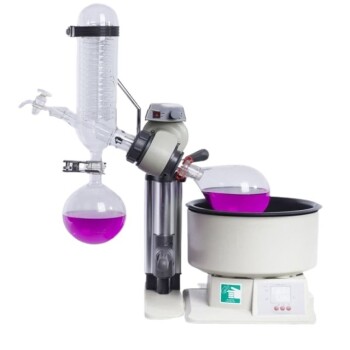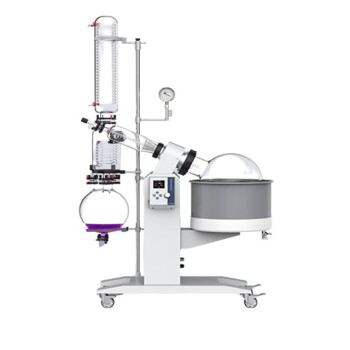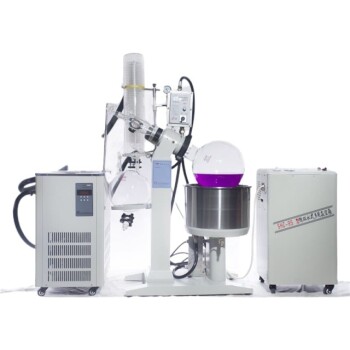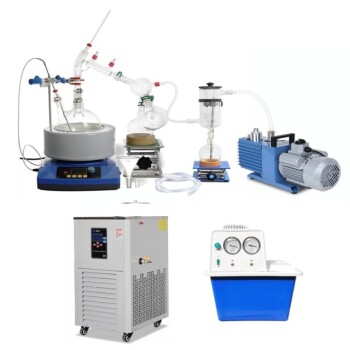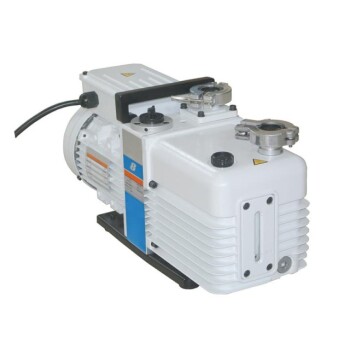Rotary evaporation is a widely used technique in laboratories for solvent removal, but it is not without its challenges. Errors in rotary evaporation can arise from improper settings, equipment limitations, or sample-specific issues. Key sources of error include overloading the condenser, bumping, slow evaporation, thermal decomposition, and inefficiency with small samples. These errors can lead to reduced efficiency, sample loss, equipment damage, or contamination. Understanding these sources of error is crucial for optimizing the process and ensuring accurate results.
Key Points Explained:

-
Overloading the Condenser
- Cause: Increasing the evaporation rate by lowering the vacuum or raising the water bath temperature can overload the condenser.
- Impact: This causes ethanol or other solvent vapors to pass through the condenser into the vacuum pump, reducing efficiency and potentially damaging the equipment.
- Prevention: Maintain a balance between vacuum level, water bath temperature, and cooling capacity to avoid overloading the condenser.
-
Bumping
- Cause: Bumping occurs when the solvent suddenly boils and erupts under vacuum conditions, often due to uneven heating or excessive vacuum.
- Impact: This can lead to sample splattering, loss of material, or contamination of the equipment.
- Prevention: Use anti-bumping granules, ensure gradual heating, and avoid excessive vacuum levels.
-
Slow Evaporation
- Cause: Slow evaporation can result from insufficient vacuum, low water bath temperature, or inadequate cooling capacity.
- Impact: This prolongs the process, wastes time, and may lead to thermal degradation of heat-sensitive samples.
- Prevention: Optimize vacuum level, water bath temperature, and cooling system performance to enhance evaporation rates.
-
Thermal Decomposition
- Cause: High water bath temperatures can cause thermal decomposition of heat-sensitive samples, such as cannabis extracts.
- Impact: This degrades the sample, reducing its quality or rendering it unusable.
- Prevention: Use lower water bath temperatures and ensure the chiller has adequate cooling capacity to maintain sample integrity.
-
Inefficiency with Small Samples
- Cause: Working with small sample volumes can lead to inefficiency, as the process may not be optimized for such quantities.
- Impact: This results in wasted effort, lost time, and an increased risk of cross-contamination.
- Prevention: Use appropriately sized equipment and ensure proper setup to handle small sample volumes effectively.
-
Foaming
- Cause: Foaming occurs when the sample’s surface tension decreases, leading to the production of bubbles.
- Impact: This can cause sample loss, contamination, or equipment clogging.
- Prevention: Use anti-foaming agents, reduce agitation, and ensure gradual heating to minimize foaming.
-
High Boiling Point Solvents
- Cause: Evaporating high boiling point solvents requires higher temperatures or stronger vacuum, which can be challenging.
- Impact: This prolongs the process and increases the risk of thermal decomposition or equipment strain.
- Prevention: Use appropriate solvent-specific settings and ensure the equipment is capable of handling high boiling point solvents.
-
Equipment Limitations
- Cause: Inadequate cooling capacity, improper vacuum control, or suboptimal condenser performance can limit the efficiency of rotary evaporation.
- Impact: This leads to slower evaporation rates, sample loss, or equipment damage.
- Prevention: Regularly maintain and calibrate equipment, and ensure it is suitable for the intended applications.
By addressing these sources of error, users can optimize their rotary evaporation processes, improve efficiency, and ensure the integrity of their samples. Proper setup, maintenance, and attention to sample-specific requirements are key to minimizing errors and achieving reliable results.
Summary Table:
| Error | Cause | Impact | Prevention |
|---|---|---|---|
| Overloading the Condenser | High evaporation rate due to low vacuum or high water bath temperature | Reduced efficiency, equipment damage | Balance vacuum, temperature, and cooling capacity |
| Bumping | Sudden boiling under vacuum due to uneven heating or excessive vacuum | Sample splattering, material loss, contamination | Use anti-bumping granules, gradual heating, avoid excessive vacuum |
| Slow Evaporation | Insufficient vacuum, low water bath temperature, or inadequate cooling | Prolonged process, thermal degradation | Optimize vacuum, temperature, and cooling system performance |
| Thermal Decomposition | High water bath temperatures | Sample degradation, reduced quality | Use lower temperatures and ensure adequate cooling capacity |
| Inefficiency with Small Samples | Small volumes not optimized for equipment | Wasted effort, time loss, cross-contamination | Use appropriately sized equipment and proper setup |
| Foaming | Decreased surface tension leading to bubble production | Sample loss, contamination, clogging | Use anti-foaming agents, reduce agitation, ensure gradual heating |
| High Boiling Point Solvents | Requires higher temperatures or stronger vacuum | Prolonged process, thermal decomposition, equipment strain | Use solvent-specific settings and ensure capable equipment |
| Equipment Limitations | Inadequate cooling, improper vacuum control, or suboptimal condenser | Slower evaporation, sample loss, equipment damage | Regular maintenance, calibration, and suitable equipment for applications |
Need help optimizing your rotary evaporation process? Contact our experts today for tailored solutions!
